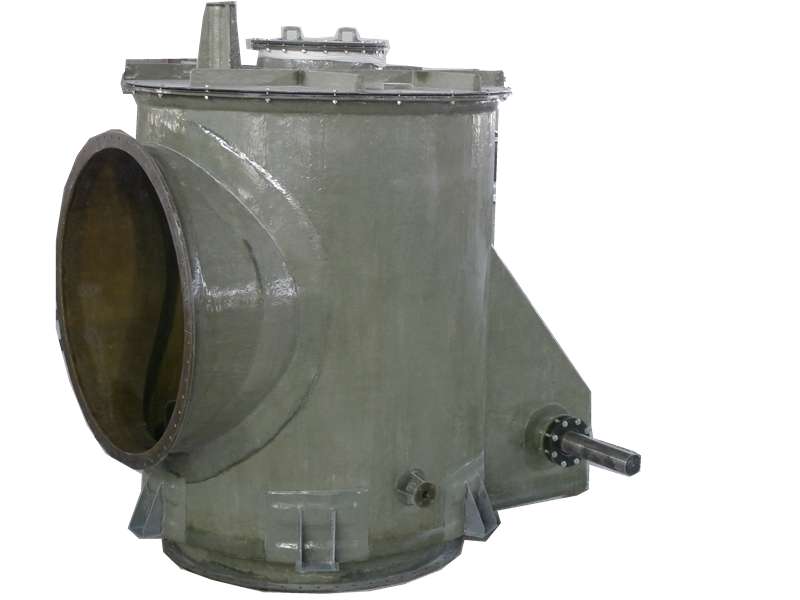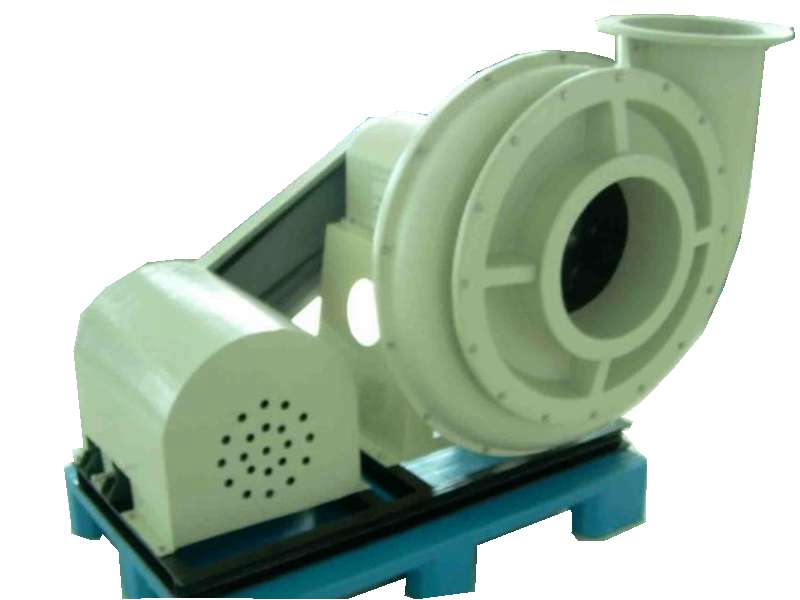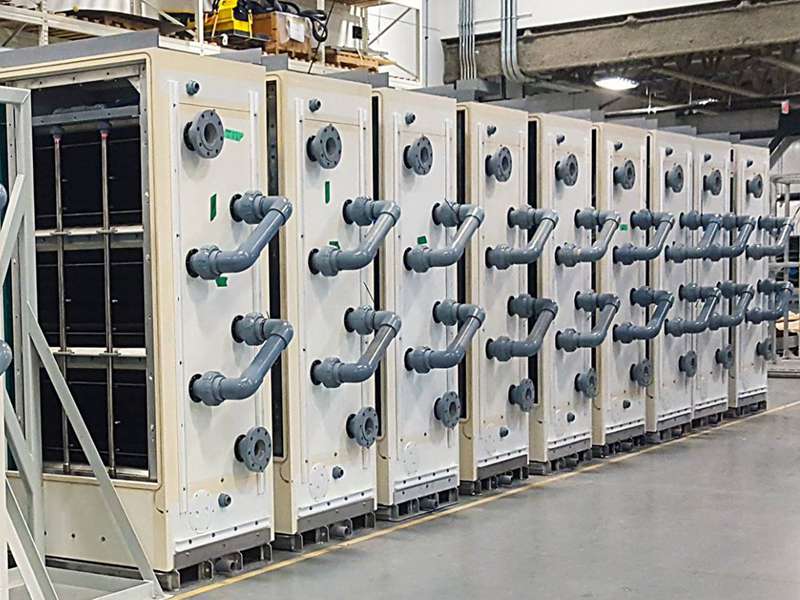
-
 Afrikaans
Afrikaans -
 Albanian
Albanian -
 Amharic
Amharic -
 Arabic
Arabic -
 Armenian
Armenian -
 Azerbaijani
Azerbaijani -
 Basque
Basque -
 Belarusian
Belarusian -
 Bengali
Bengali -
 Bosnian
Bosnian -
 Bulgarian
Bulgarian -
 Catalan
Catalan -
 Cebuano
Cebuano -
 China
China -
 China (Taiwan)
China (Taiwan) -
 Corsican
Corsican -
 Croatian
Croatian -
 Czech
Czech -
 Danish
Danish -
 Dutch
Dutch -
 English
English -
 Esperanto
Esperanto -
 Estonian
Estonian -
 Finnish
Finnish -
 French
French -
 Frisian
Frisian -
 Galician
Galician -
 Georgian
Georgian -
 German
German -
 Greek
Greek -
 Gujarati
Gujarati -
 Haitian Creole
Haitian Creole -
 hausa
hausa -
 hawaiian
hawaiian -
 Hebrew
Hebrew -
 Hindi
Hindi -
 Miao
Miao -
 Hungarian
Hungarian -
 Icelandic
Icelandic -
 igbo
igbo -
 Indonesian
Indonesian -
 irish
irish -
 Italian
Italian -
 Japanese
Japanese -
 Javanese
Javanese -
 Kannada
Kannada -
 kazakh
kazakh -
 Khmer
Khmer -
 Rwandese
Rwandese -
 Korean
Korean -
 Kurdish
Kurdish -
 Kyrgyz
Kyrgyz -
 Lao
Lao -
 Latin
Latin -
 Latvian
Latvian -
 Lithuanian
Lithuanian -
 Luxembourgish
Luxembourgish -
 Macedonian
Macedonian -
 Malgashi
Malgashi -
 Malay
Malay -
 Malayalam
Malayalam -
 Maltese
Maltese -
 Maori
Maori -
 Marathi
Marathi -
 Mongolian
Mongolian -
 Myanmar
Myanmar -
 Nepali
Nepali -
 Norwegian
Norwegian -
 Norwegian
Norwegian -
 Occitan
Occitan -
 Pashto
Pashto -
 Persian
Persian -
 Polish
Polish -
 Portuguese
Portuguese -
 Punjabi
Punjabi -
 Romanian
Romanian -
 Russian
Russian -
 Samoan
Samoan -
 Scottish Gaelic
Scottish Gaelic -
 Serbian
Serbian -
 Sesotho
Sesotho -
 Shona
Shona -
 Sindhi
Sindhi -
 Sinhala
Sinhala -
 Slovak
Slovak -
 Slovenian
Slovenian -
 Somali
Somali -
 Spanish
Spanish -
 Sundanese
Sundanese -
 Swahili
Swahili -
 Swedish
Swedish -
 Tagalog
Tagalog -
 Tajik
Tajik -
 Tamil
Tamil -
 Tatar
Tatar -
 Telugu
Telugu -
 Thai
Thai -
 Turkish
Turkish -
 Turkmen
Turkmen -
 Ukrainian
Ukrainian -
 Urdu
Urdu -
 Uighur
Uighur -
 Uzbek
Uzbek -
 Vietnamese
Vietnamese -
 Welsh
Welsh -
 Bantu
Bantu -
 Yiddish
Yiddish -
 Yoruba
Yoruba -
 Zulu
Zulu
High-Efficiency Fans, Dampers & Demisters | Custom Solutions
Welcome to the definitive resource for understanding industrial air and gas handling systems. At J-Rain, we leverage decades of specialized experience to engineer and manufacture state-of-the-art Fans & Dampers & Demisters. Our solutions, primarily crafted from advanced Fiber-Reinforced Plastic (FRP), are designed to meet the extreme demands of modern industry, delivering unparalleled durability, efficiency, and performance in corrosive environments.
Explore Our ProductsIndustry Trends & Market Dynamics
The global market for industrial fans, blowers, and emission control systems is undergoing a significant transformation. Key drivers include stricter environmental regulations (e.g., EPA's Clean Air Act, EU's Industrial Emissions Directive), a growing emphasis on energy efficiency to reduce operational costs, and an increasing need for materials that can withstand highly corrosive industrial processes. Market analysis projects a CAGR of over 4.5% for the industrial fan market through 2028, with a notable shift towards specialized materials like FRP over traditional metals in harsh chemical applications.
This trend underscores a critical industry need: standard off-the-shelf solutions are no longer sufficient. Industries such as petrochemical refining, semiconductor manufacturing, and waste-to-energy plants require custom-engineered Fans & Dampers & Demisters that offer longevity, reliability, and compliance. J-Rain is at the forefront of this evolution, pioneering FRP solutions that directly address these challenges.
Technical Deep Dive: The J-Rain Advantage
Unpacking the Components: What Are Fans, Dampers, and Demisters?
While often used together, each component serves a distinct, critical function in an air/gas handling system:
Industrial Fans
These are the workhorses, responsible for moving large volumes of air or gas. We specialize in Centrifugal Fans (for high-pressure applications like fume extraction) and Axial Fans (for high-volume, low-pressure ventilation). Our expertise lies in selecting the right impeller design (e.g., backward-curved for high efficiency, radial for material handling) and constructing it from corrosion-proof FRP.
Control Dampers
Dampers regulate the flow of air or gas within a duct system. We design Louver Dampers, Butterfly Dampers, and Guillotine Dampers. Precise control is key for process optimization and safety. Our FRP dampers ensure leak-resistant operation and will not seize or fail due to corrosion, a common issue with metal dampers in chemical environments.
Mist Eliminators (Demisters)
Demisters are crucial for removing liquid droplets from a gas stream. This is vital in processes like wet scrubbing (FGD), chemical reactors, and cooling towers to prevent downstream equipment damage and reduce pollutant emissions. Our chevron and mesh pad demisters achieve up to 99.9% removal efficiency, compliant with the most stringent standards.

An example of our custom-engineered FRP centrifugal fan, designed for maximum corrosion resistance.
Mastering the Craft: Our ISO 9001 Certified Manufacturing Process
Our commitment to excellence is embedded in our manufacturing methodology. Each product undergoes a rigorous, transparent process, ensuring it meets and exceeds industry benchmarks like ANSI and ASTM standards. This process demonstrates our deep Expertise and builds the Trustworthiness our clients rely on.
Design & CFD Analysis
Every project begins with a deep dive into your requirements (flow rate, static pressure, chemical composition, temperature). Our engineers use advanced CAD software and Computational Fluid Dynamics (CFD) to model performance, ensuring optimal efficiency and structural integrity before a single piece of material is cut.
Advanced Material Selection
We select from a wide range of thermosetting resins (Vinyl Ester, Isophthalic Polyester, Epoxy) and reinforcements (E-Glass, C-Glass, Carbon Fiber). This choice is critical and is based on the specific chemical and thermal demands of your application, ensuring a service life far exceeding that of metal alternatives.
Precision Fabrication
Our fabrication methods are chosen to optimize product quality. We employ Hand Lay-Up for complex geometries, Filament Winding for high-strength cylindrical housings, and precision CNC Machining for critical components like fan impellers and damper linkages. This hybrid approach guarantees both performance and durability.
Curing & Quality Control
Components are cured under controlled temperature and atmospheric conditions to achieve maximum cross-linking and material strength. Every single fan impeller is dynamically balanced to ISO 1940 G2.5 standards to eliminate vibration. We conduct hydrostatic tests, spark tests for lining integrity, and material property verification (per ASTM D2583) to validate our work.
Technical Specifications Overview
The following table outlines the typical operational parameters and material specifications for our Fans & Dampers & Demisters. Note that all specifications can be customized to your exact needs.
| Parameter | Fan Specifications | Damper Specifications | Demister Specifications |
|---|---|---|---|
| Primary Material | FRP (Vinyl Ester, Polyester, Epoxy), with optional thermoplastic liners (PP, PVC, PVDF) | FRP (Vinyl Ester, Polyester), with options for Hastelloy or Titanium shafts | FRP, Polypropylene (PP), PVDF, Stainless Steel |
| Applicable Industries | Petrochemical, Metallurgy, Power Generation (FGD), Wastewater, Semiconductor | HVAC, Chemical Processing, Pollution Control, Mining | Scrubbers, Cooling Towers, Evaporators, Chemical Plants |
| Operating Temperature | -40°C to 150°C (-40°F to 300°F), depending on resin selection | -40°C to 150°C (-40°F to 300°F) | Up to 120°C (250°F) for PP/FRP models |
| Pressure Range | Up to 20,000 Pa (80 in.wg) for centrifugal fans | Designed for system pressures up to 25,000 Pa | Low pressure drop, typically |
| Design Standards | AMCA 210/300, ISO 1940 (Balancing), ANSI | AMCA 500-D | Performance verified by empirical testing and CFD |
| Key Advantage | Extreme Corrosion Resistance, High Efficiency, Low Maintenance | Leak-proof, Non-seizing, Precise Modulation | High Droplet Removal Efficiency (>99.9%), Low Fouling |
Data-Driven Comparison: FRP vs. Traditional Materials
Our Experience has shown time and again that while traditional materials like carbon steel or stainless steel may have a lower initial cost, their total cost of ownership in corrosive environments is significantly higher. The chart below visualizes a comparative analysis based on a 15-year operational lifecycle in a typical chemical plant environment.

J-Rain's robust FRP damper installed for reliable flow control in a corrosive gas duct.
Manufacturer & Solution Comparison
Choosing the right partner is as critical as choosing the right material. Our Authoritativeness is built not just on superior products, but on a comprehensive solution-oriented approach.
| Feature / Service | J-Rain FRP Solutions | Generic Metal Fabricators | Standard FRP Suppliers |
|---|---|---|---|
| Material Expertise | Specialized in resin/fiber selection for specific chemical resistance | Limited to various steel alloys; corrosion allowance needed | Often uses general-purpose resins, may not suit extreme conditions |
| Custom Engineering | Full custom design with CFD/FEA analysis for every project | Standard sizes, limited customization | Limited custom design, often based on modifying standard molds |
| Quality Assurance | ISO 9001 certified; Rigorous testing (dynamic balancing, hydro-test) | Basic dimensional checks; corrosion tests are rare | Variable; often lacks stringent balancing or material testing |
| Service Lifespan (Corrosive Env.) | 15-25+ years | 3-7 years (depending on corrosion rate) | 10-15 years |
| After-Sales Support | 24/7 technical support, on-site assistance, full lifecycle partnership | Limited to product warranty claims | Basic phone/email support |
Customized Solutions & Real-World Application Cases
Our greatest strength lies in translating our engineering expertise into tangible results for our clients. We don't just sell products; we provide integrated, custom-tailored Fans & Dampers & Demisters systems.
Case Study 1: Petrochemical Plant Fume Scrubber
Client: Major Gulf Coast Chemical Producer.
Challenge: Existing stainless steel 316L fan failed within 18 months due to corrosion from wet chlorine and HCl fumes. Frequent downtime was costing over $150,000 annually.
Our Solution: We engineered a 15,000 CFM centrifugal fan with a housing and impeller made from Derakane™ vinyl ester resin reinforced with E-glass. The shaft was solid titanium. A matching FRP louver damper was provided for flow control.
Result: The J-Rain fan has been in continuous operation for over 8 years with zero corrosion-related maintenance. The client reported a 95% reduction in unplanned downtime for the system and a full ROI in under 2 years. This case highlights our Experience in solving tough industrial challenges.
Case Study 2: Mining & Metallurgy Acid Mist Control
Client: A leading copper electrowinning facility.
Challenge: The acid mist generated during the process was causing severe corrosion to the building structure and posed a health risk. Their existing ventilation system was inadequate.
Our Solution: We designed a complete ventilation and mist elimination system, including multiple large-diameter FRP axial fans for general ventilation, and a high-efficiency chevron blade FRP demister installed over the electrowinning cells.
Result: Airborne acid mist levels were reduced by 99%, bringing the facility well within OSHA compliance. The demister effectively captured the mist, allowing for acid recovery and reuse, providing an unexpected economic benefit.

High-efficiency FRP demister modules undergoing final quality inspection before shipment.
Building Trust: Our Commitments and Guarantees
Your trust is the foundation of our business. We earn it through transparency, reliability, and an unwavering commitment to quality.
Quality & Compliance
Our facilities are ISO 9001:2015 certified. Our products are designed in accordance with international standards from AMCA, ANSI, and ASTM. We provide full documentation packages, including material certificates, test reports, and O&M manuals.
Delivery & Logistics
We understand that project timelines are critical. We provide clear delivery schedules (typically 8-14 weeks for custom projects) and work with trusted global logistics partners to ensure your equipment arrives safely and on time, anywhere in the world.
Warranty & Support
We stand behind our work with a comprehensive 24-month warranty against defects in materials and workmanship. Our relationship doesn't end at delivery; we offer 24/7 technical support, spare parts services, and on-site consultation to ensure the long-term success of your system.
Frequently Asked Questions (FAQ)
Here are answers to some common technical questions, demonstrating our deep product Expertise.
1. What is FRP and why is it superior for Fans & Dampers & Demisters?
FRP, or Fiber-Reinforced Plastic, is a composite material made from a polymer matrix (the "resin") reinforced with fibers (typically glass, carbon, or aramid). For industrial applications, we primarily use thermosetting resins like Vinyl Ester or Epoxy. The key advantage is its exceptional chemical resistance. Unlike metals that corrode electrochemically, FRP is inert to a wide range of acids, alkalis, and solvents. This eliminates the need for corrosion allowances, reduces weight, and provides a much longer service life in aggressive environments, making it ideal for Fans & Dampers & Demisters.
2. How do you select the right fan type (axial vs. centrifugal) for an application?
The choice depends on the system's requirements for airflow (CFM) and pressure (Static Pressure).
- Axial Fans: Best for moving large volumes of air at low pressure. Ideal for general ventilation, cooling towers, and air-cooled heat exchangers.
- Centrifugal Fans: Excel at generating high pressures needed to overcome resistance in ductwork, filters, and scrubbers. They are the standard choice for fume extraction and process gas handling. Our engineers analyze your system's "resistance curve" to select a fan that operates at its peak efficiency point, saving energy.
3. What are the main differences between louver, butterfly, and guillotine dampers?
Each type offers a different balance of control, sealing efficiency, and cost:
- Louver Dampers: Use multiple parallel blades. They offer good flow modulation and are common in HVAC and light industrial applications.
- Butterfly Dampers: Feature a single disc rotating on a central axis. They are simple, cost-effective, and provide quick on/off or modulating control, suitable for most industrial applications.
- Guillotine (or Slide Gate) Dampers: Use a flat plate that slides across the duct. They are primarily used for on/off isolation, offering the best seal (near zero leakage) when fully closed, making them ideal for system maintenance or emergency shut-off.
4. What is "demisting efficiency" and how is it measured?
Demisting efficiency is the percentage of liquid droplets of a specific size range that a mist eliminator can remove from a gas stream. It is typically specified as "99.9% removal of all droplets 10 microns and larger." Efficiency is a function of gas velocity, droplet size distribution, and demister design (blade spacing, profile). We verify performance using a combination of CFD modeling and empirical data derived from performance tests that often involve laser particle counters or gravimetric analysis (weighing the collected liquid) under controlled conditions.
5. What international standards do your products comply with?
We adhere to a suite of internationally recognized standards to guarantee safety, performance, and reliability. Key standards include:
- ISO 9001:2015: For our Quality Management System.
- AMCA 210 & 300: For certified fan performance testing (airflow, pressure, power).
- ISO 1940-1: For mechanical vibration standards, specifying balance quality grades (we typically balance to G2.5).
- ASTM D2583: For Barcol hardness testing of cured FRP.
- ANSI/ASME standards: For flange dimensions and pressure vessel design when applicable.
6. Can you handle emergency replacement orders for critical equipment?
Absolutely. We understand that equipment failure can halt production. We have an expedited engineering and production process for emergency situations. For existing clients, we often have the original design on file, which significantly speeds up manufacturing. For new clients, we can dispatch an engineer for on-site measurement to reverse-engineer the failed unit and get a replacement FRP solution into production as quickly as possible.
7. What is the true service life of a J-Rain FRP fan in a highly corrosive environment?
With proper material selection and engineering, the expected service life of our FRP equipment is typically 15 to 25 years or more, even in the most aggressive chemical environments like those found in chlorine production or acid regeneration plants. This stands in stark contrast to specialized alloys like Hastelloy, which may last 5-10 years, or stainless steel, which can fail in under 2 years. The longevity of our Fans & Dampers & Demisters represents one of their most significant value propositions.
Further Reading & Authoritative Citations
To further your understanding, we recommend these authoritative resources from leaders in materials science and industrial engineering.
- NACE International (now AMPP): For in-depth articles on corrosion control and material selection. See: The Association for Materials Protection and Performance (AMPP).
- Air Movement and Control Association (AMCA): For standards related to fan and damper performance. See: AMCA International Publications.
- Journal of Hazardous Materials: A peer-reviewed journal often featuring studies on industrial emission control and scrubber efficiency. See: ScienceDirect - Journal of Hazardous Materials.
- "Performance of FRP Composite Fans in Corrosive Environments," a typical topic found in proceedings from composites engineering conferences, which validates the technical superiority of the materials we champion.
Latest news
-
High-Efficiency Fans, Dampers & Demisters | Custom SolutionsNewsAug.06,2025
-
Precision Mandrels and Molds - Engineered SolutionsNewsAug.04,2025
-
Dual Laminate Products | Superior Corrosion ResistanceNewsAug.03,2025
-
Large Size Field Tanks with AI-Powered EfficiencyNewsAug.01,2025
-
Steps: Simple Solutions for Every ProcessNewsJul.30,2025
-
Other Products for Versatile Solutions – Quality & InnovationNewsJul.29,2025








